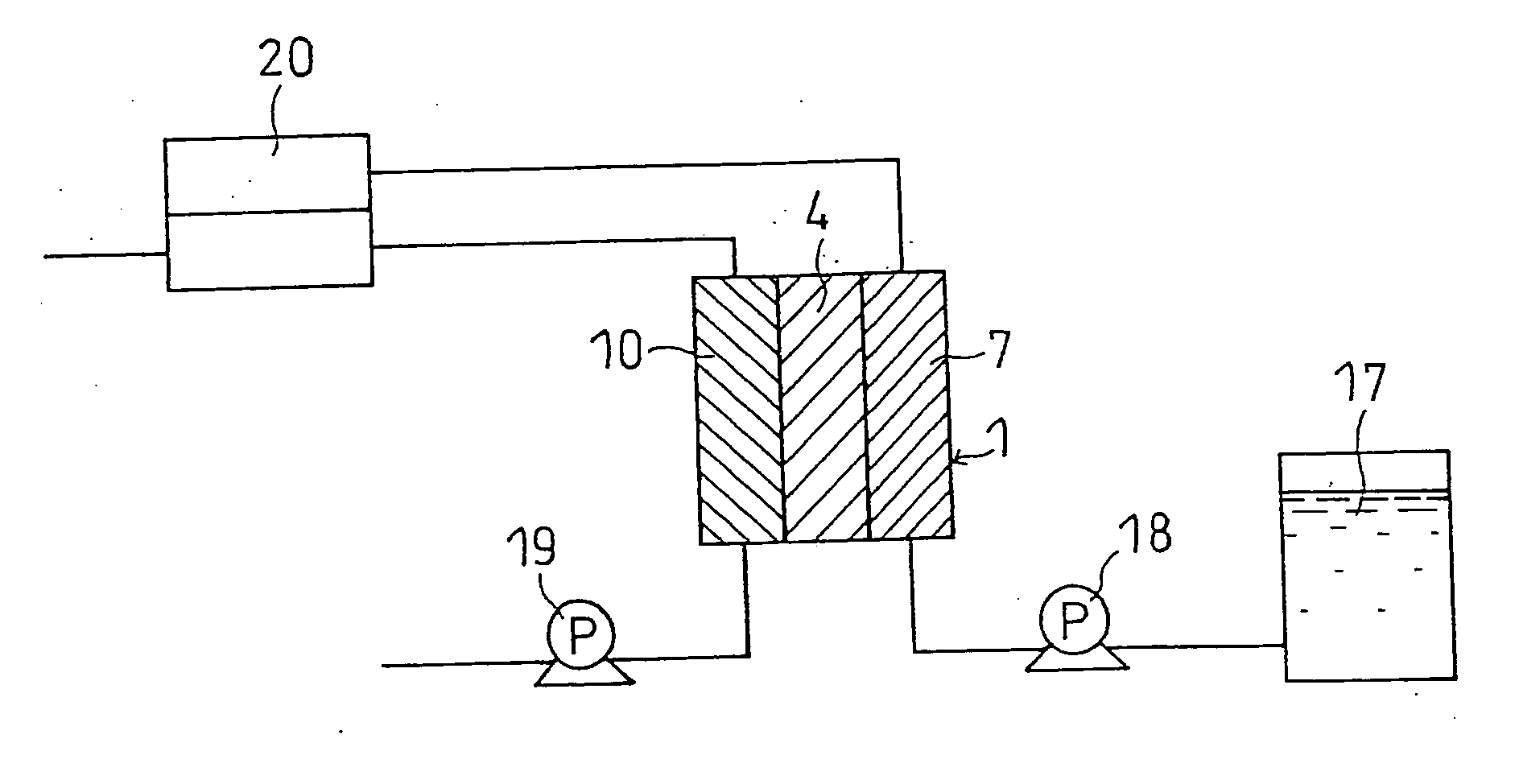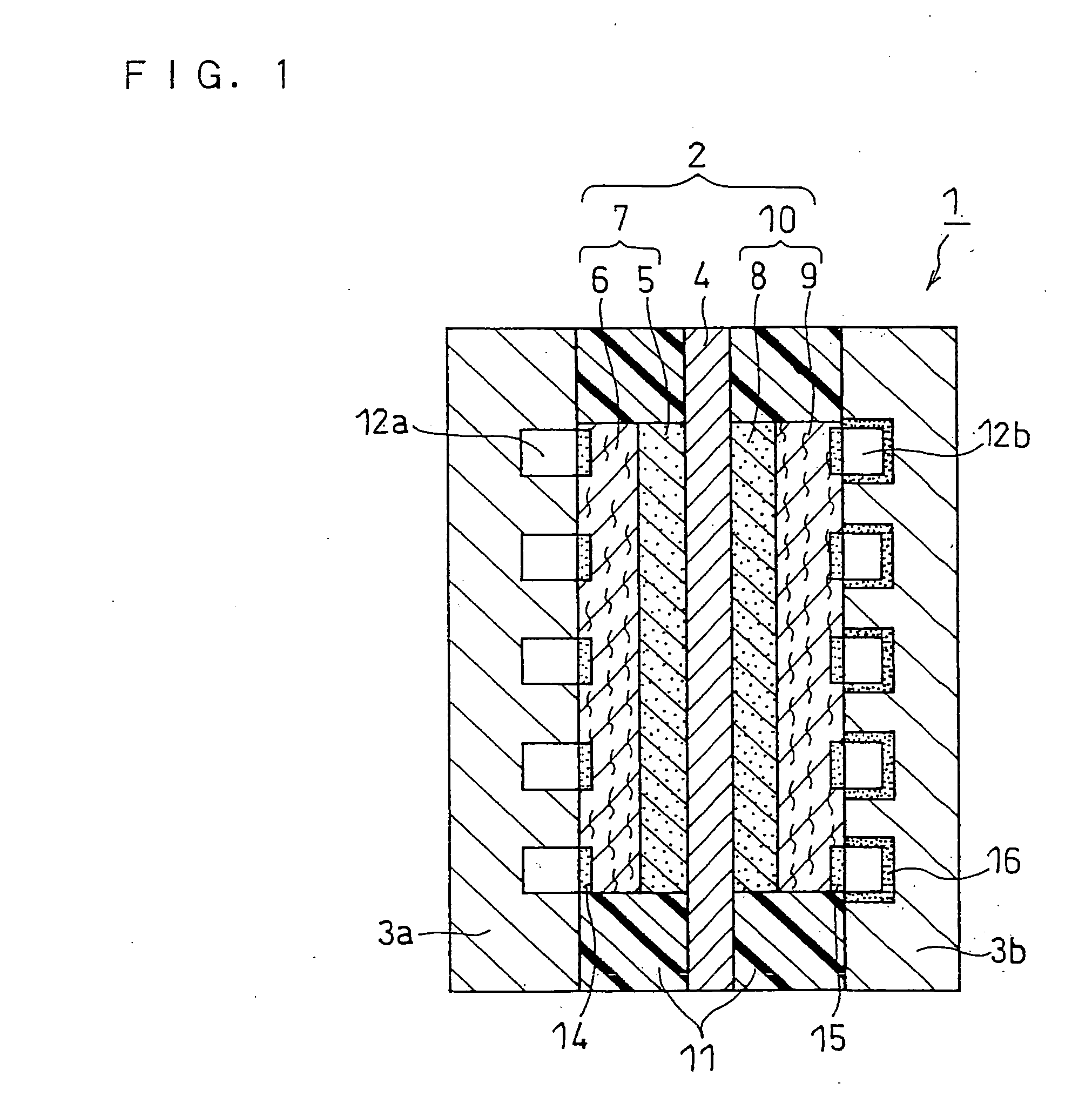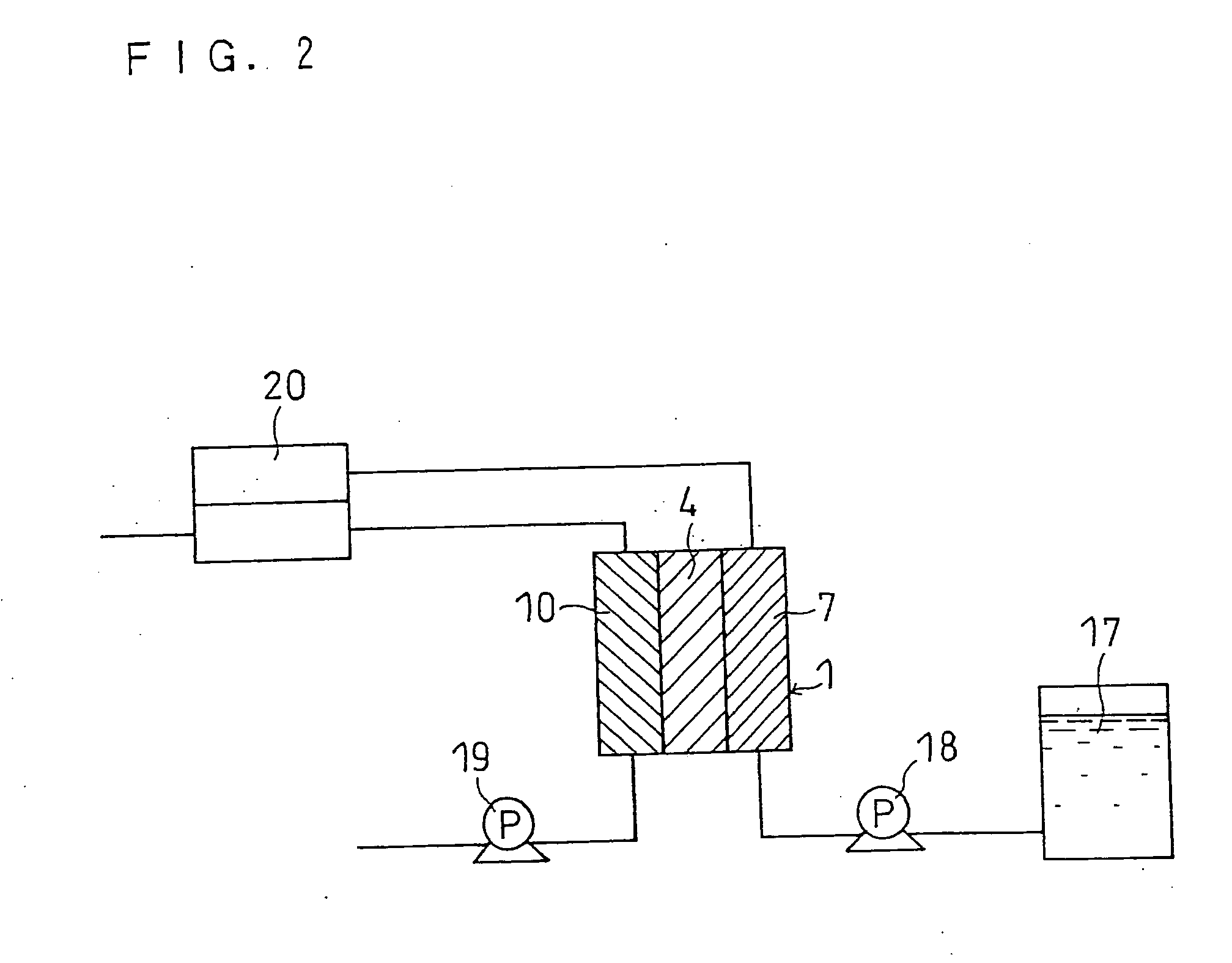Direct-type fuel cell and direct-type fuel cell system
a fuel cell and direct-type technology, applied in the direction of fuel cell details, cell components, electrochemical generators, etc., can solve the problems of large obstacle to the reduction of the size of the fuel cell system, large use of such low concentration fuel, and significant deformation of power generation characteristics, so as to reduce the crossover of fuel and improve the dischargeability of carbon dioxide (reaction product), the effect of suppressing the clogging of the cathode with water
- Summary
- Abstract
- Description
- Claims
- Application Information
AI Technical Summary
Benefits of technology
Problems solved by technology
Method used
Image
Examples
example 1
[0085] A fuel cell as illustrated in FIG. 1 was produced.
(i) Anode-Side Catalyst Layer
[0086] Anode-catalyst-carrying particles were prepared by placing 30% by weight of Pt fine particles and 30% by weight of Ru fine particles, both particles having a mean particle size of 3 nm, on carbon black particles with a mean primary particle size of 30 nm (ketjen black EC available from Mitsubishi Chemical Corporation), which are conductive carbon particles.
[0087] A dispersion of the anode-catalyst-carrying particles in an isopropanol aqueous solution was mixed with a dispersion of a polymer electrolyte in an ethanol aqueous solution. This liquid mixture was stirred in a bead mill, to prepare an anode catalyst paste. The weight ratio between the conductive carbon particles and the polymer electrolyte in the anode catalyst paste was 2:1. The polymer electrolyte used was a perfluorocarbon sulfonic acid ionomer (Flemion available from Asahi Glass Co., Ltd.).
[0088] The anode catalyst paste w...
example 2
[0095] In forming the diffusion surface layer 14 (PTFE / silicone layer) on the substrate of the anode-side diffusion layer 6, the repeating number of spray coating and air drying was changed and the high temperature drying condition was changed to 80° C. for 60 minutes in order to make the thickness of the diffusion surface layer 14 to approximately 100 μm. A fuel cell (cell B) was produced in the same manner as in Example 1 except for these changes.
example 3
[0096] A carbon paper with a thickness of 180 μm (TGP-060 available from Toray Industries Inc.) was used as the substrate of the anode-side diffusion layer 6 instead of TGP-H120. Also, in forming the diffusion surface layer 14 (PTFE / silicone layer) on the substrate of the anode side diffusion layer 6, the repeating number of spray coating and air drying was changed and the high temperature drying condition was changed to 70° C. for 20 minutes in order to make the thickness of the diffusion surface layer 14 to approximately 5 μm. A fuel cell (cell C) was produced in the same manner as in Example 1 except for these changes.
PUM
| Property | Measurement | Unit |
|---|---|---|
| surface tension | aaaaa | aaaaa |
| contact angle | aaaaa | aaaaa |
| energy density | aaaaa | aaaaa |
Abstract
Description
Claims
Application Information
 Login to View More
Login to View More - R&D
- Intellectual Property
- Life Sciences
- Materials
- Tech Scout
- Unparalleled Data Quality
- Higher Quality Content
- 60% Fewer Hallucinations
Browse by: Latest US Patents, China's latest patents, Technical Efficacy Thesaurus, Application Domain, Technology Topic, Popular Technical Reports.
© 2025 PatSnap. All rights reserved.Legal|Privacy policy|Modern Slavery Act Transparency Statement|Sitemap|About US| Contact US: help@patsnap.com



